4 St Johns Street, Colchester, Essex, CO2 7AA
This building was originally the Playhouse theatre which had opened in 1929, yet, in the early 1930s, became a cinema. In 1981, it was turned into a bingo hall for a few years and then remained empty, until it reopened as a Wetherspoon pub.
A collection of posters from when this pub was the Playhouse Theatre.
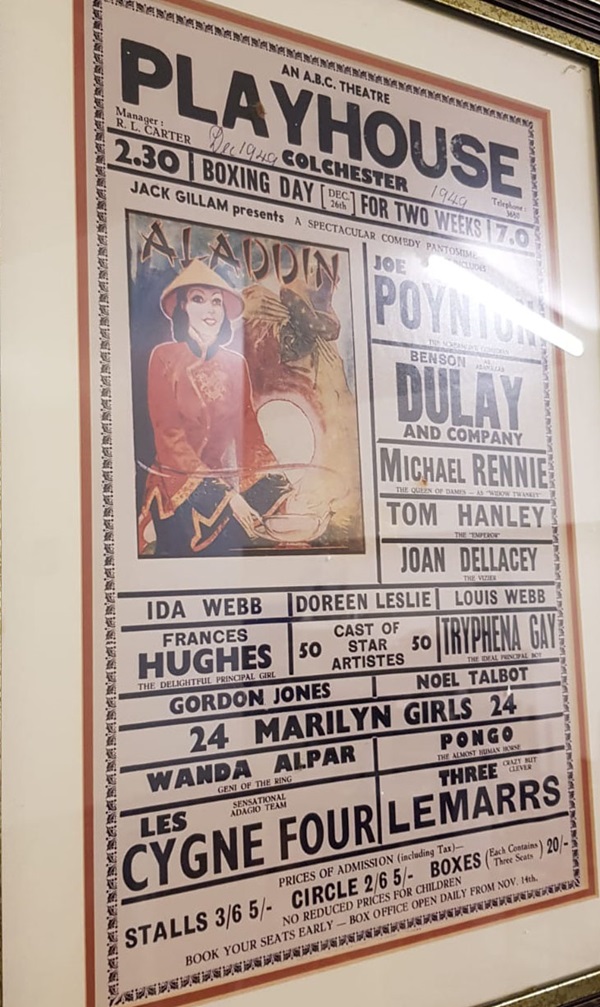
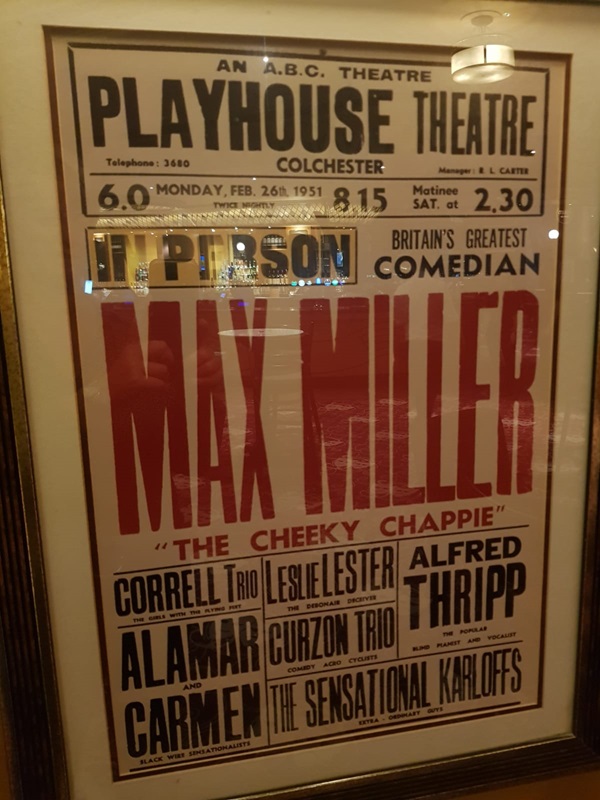
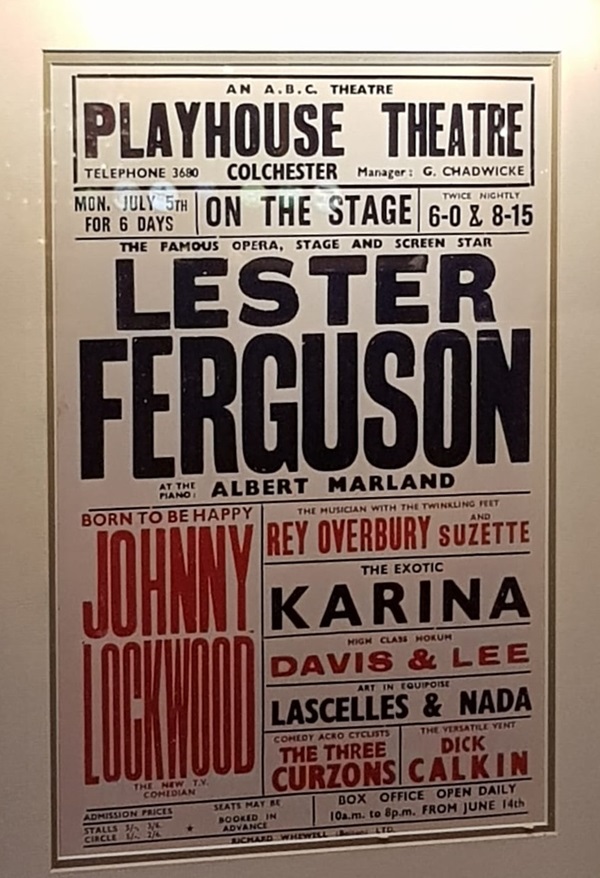
The pub has some famous figures on the balcony, where they have kept the original seating.
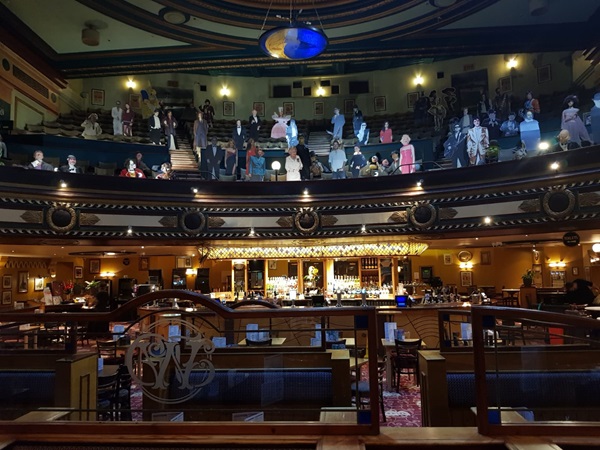
A print and text about the Trinovantes and Cunobelin.
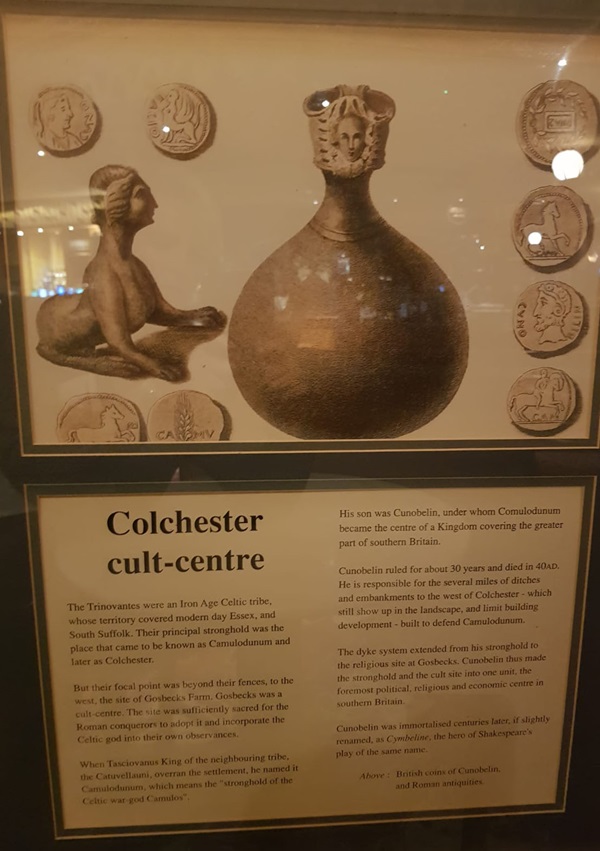
The text reads: The Trinovantes were an Iron Age Celtic tribe, whose territory covered modern day Essex, and South Suffolk. Their principal stronghold was the place that came to be known as Camulodunum and later as Colchester.
But their focal point was beyond their fences, to the west, the site of Gosbecks Farm. Gosbecks was a cult-centre. The site was sufficiently sacred for the Roman conquerors to adopt it and incorporate the Celtic god into their own observances.
When Tasciovanus King of the neighbouring tribe, the Cauvellauni, overran the settlement, he named it Camulodunum, which means the “stronghold of the Celtic war-gold Camulos”. His son was Cunobelin, under whom Camulodunum became the centre of a Kingdom covering the greater part of southern Britain.
Cunobelin ruled for about 30 years and died in 40AD. He is responsible for the several miles of diches and embankments to the west of Colchester – which still show up in the landscape, and limit building development – built to defend Camulodunum.
The dyke system extended from his stronghold to the religious site at Gosbecks. Cunobelin thus made the stronghold and the cult site into one unit, the foremost political, religious and economic centre in southern Britain.
Cuobelin was immortalised centuries later, if slightly renamed, as Cymbeline, the hero of Shakespeare’s play of the same name.
Above: British coins of Cunobelin, and Roman antiquities.
A photograph of S Botolph’s Street, Colchester, 1908.
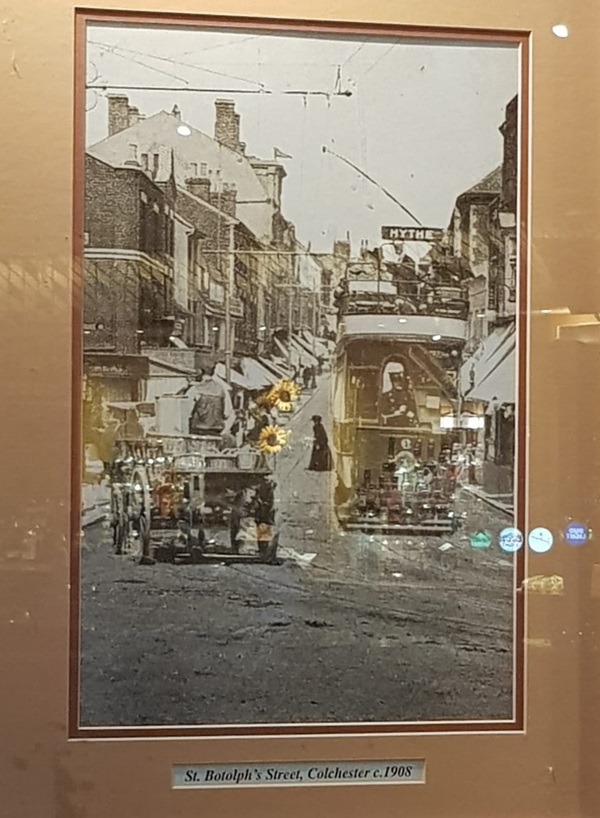
A photograph of the Town Hall, Colchester, 1905.
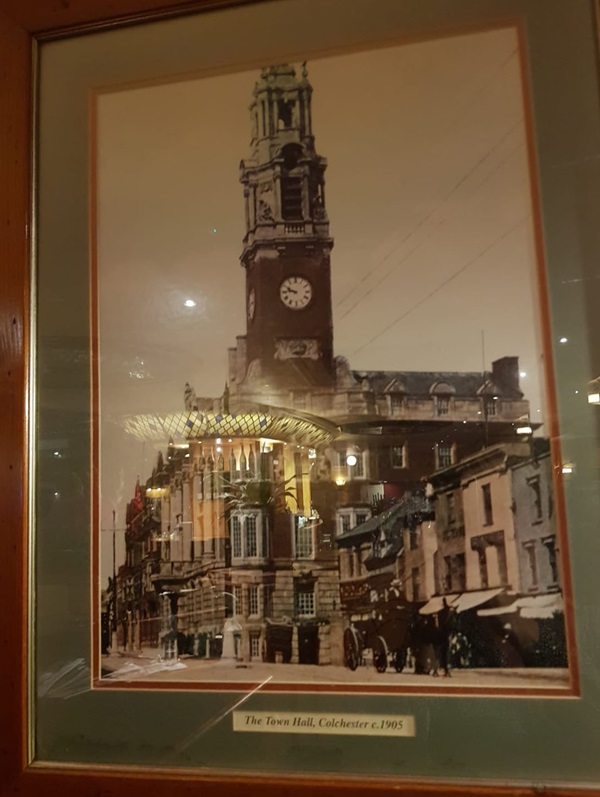
External photograph of the building – main entrance.
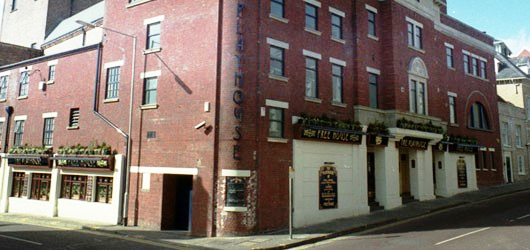
If you have information on the history of this pub, then we’d like you to share it with us. Please e-mail all information to: pubhistories@jdwetherspoon.co.uk